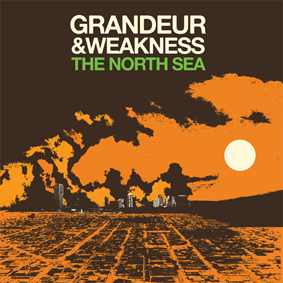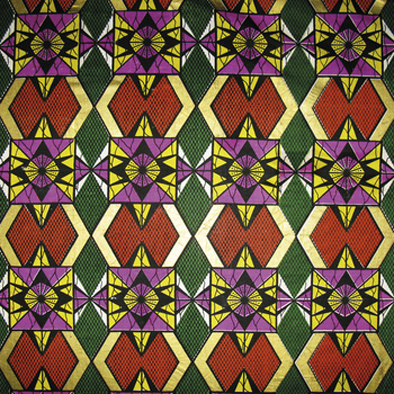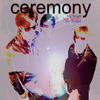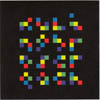- Administrator
- Albums and Singles
 There are very few musicians that can craft a genuinely compelling album from just a few sustained tones or chords and most of them (Catherine Christer Hennix and Eliane Radigue, for example) seem to have records on Important.  With the eerie and evocative Secret Photographs, Rutger Zuydervelt has decisively earned his place in that highly exclusive clique.
There are very few musicians that can craft a genuinely compelling album from just a few sustained tones or chords and most of them (Catherine Christer Hennix and Eliane Radigue, for example) seem to have records on Important.  With the eerie and evocative Secret Photographs, Rutger Zuydervelt has decisively earned his place in that highly exclusive clique.
Notably, Secret Photographs is a soundtrack to a Mike Hoolboom film that has not yet been completed.  I say "notably" because I generally avoid soundtracks, as by their very nature they are not meant to stand on their own–they exist to provide coloration for a visual component.  It is very rare for one component of a multimedia work to dazzle me when decontextualized from its intended whole.  The infrequent exceptions tend to occur with experimental cinema where music tends to either drive or share supremacy with the images.  Hoolboom's unfinished film certainly seems to fall within that category, but it probably does not hurt that the music was completed before the film.
It probably also helps that the film sounds quite fascinating, which no doubt played a role in inspiring Rutger to compose some of the most beautiful music of his career.  Essentially, the completed film will be an unfolding series of still photographs by Alvin "Creepy" Karpis slowly dissolving into one another.  Karpis was a key member of Ma Barker's infamous gang in the '30s and a former Public Enemy #1 to boot (no small accomplishment).  After a long incarceration and some time exiled in Canada, he spent his final years living in Spain where he developed an intense obsession with photography.  He never showed these photographs to anyone, but they eventually surfaced on eBay and Hoolboom wisely pounced on them, thus beginning the chain of events that led to this album.
Each of the three pieces here spans roughly twenty minutes and maintains an overarching aesthetic of fragile, lonely shimmer and near-static, glacial pace.  The degree of Zuydervelt's ultra-minimalism varies quite a bit from piece to piece, however.  The most minimal of all is the opening "Part One (Black and White)," which is based entirely upon the shifting harmonies of a few artfully blurred and slowly changing tones.  Notably, I cannot tell which instrument they may have originated from, which imbues them with a rare beauty and purity.  Normally, that also comes with a loss of character, but that does not occur here, as the evocatively drifting and forlorn atmosphere is perfect just the way it is.  Also, Rutger deftly employs quiet field recordings of ambient outdoor life and distant cars to provide a very real sense of (lonely) place.
The second piece, "Part Two (Colour)," is a bit closer to what I normally expect from Machinefabriek: a slowly unfolding and melancholy guitar figure that ultimately coheres into a swelling drone.  As such, it is not nearly as revelatory as the other pieces on the album, but it provides a very necessary contrast  and is quite good for what it is.  Also, if I listen extremely closely near the beginning, I can hear something that sounds like a very menacing pack of barking dogs, which changes the whole mood of the piece for me.  It is so buried, however, that it could easily be any number of other things, ranging from a distorted, distant television to simply a processed loop of Rutger's fingers sliding over his guitar strings.  I like mysteries and hidden nuances, especially if they can be construed as somewhat disturbing.
Zuydervelt saves his most inspired piece for last, as "Part Three (Black and White)" is essentially a reprise of the opening piece, but arguably more brilliant and definitely more disquieting.  The changes are quite small in scope, but have a dramatic cumulative effect on the overall mood, which decisively drifts into rather hallucinatory and nightmarish territory.  As near as I can tell, the various tones simply cohere into uglier harmonies, giving rise to subtle pulses and oscillations.  Also, the tones are slightly more harsh and distorted and the natural sounds of "Part One" are replaced by undulating swells of hiss and crackle.  It is quite a mesmerizing and haunting piece in its own right, but works even better within the context of the album, ending the dreamlike drift of Secret Photographs in impressively uneasy and disturbed fashion.  I especially enjoyed the soft "pop" at the end, which seems like Rutger breaking his surreal spell by simply and matter-of-factly turning off his amp.
Within the context of Zuydervelt's sprawling discography, Secret Photographs is probably not the best place to start, as several other Machinefabriek albums offer much more in the way of immediate gratification.  Artistically, however, this album is an unquestionable highlight and absolutely essential for existing fans of Rutger's work (or of innovative sound art, in general).  Very few albums reward attentive listening as richly as this one.
 
Read More
- Administrator
- Albums and Singles
 Digitalis head Brad Rose has been a wildly prolific and varied artist for years, but his heavy drone project The North Sea has been the longest-running of his many musical endeavors.  Lately, however, he has a adapted the more synth-centric guise of Charlatan as his primary outlet, so Grandeur & Weakness marks the end of an era and does so beautifully.  In some respects, this effort is not radically different from Charlatan's recent Isolatarium (they use very similar tools), but the difference in density and atmosphere is dramatic, as futuristic unease is replaced by buzzing, bristling monoliths of menace and dread.
Digitalis head Brad Rose has been a wildly prolific and varied artist for years, but his heavy drone project The North Sea has been the longest-running of his many musical endeavors.  Lately, however, he has a adapted the more synth-centric guise of Charlatan as his primary outlet, so Grandeur & Weakness marks the end of an era and does so beautifully.  In some respects, this effort is not radically different from Charlatan's recent Isolatarium (they use very similar tools), but the difference in density and atmosphere is dramatic, as futuristic unease is replaced by buzzing, bristling monoliths of menace and dread.
High-concept noise albums have always amused and fascinated me, as grinding cacophony inspired by, say, deforestation often tends to sound an awful lot like grinding cacophony inspired by serial killers, terrorism, or giallo films.  Of course, the packaging in all those cases would be radically different, but the intended message is usually hopelessly buried or lost in the squall.  What truly matters, of course, is the quality of the music that the subject material inspired.  In this case, the topic is Franz Fanon's The Wretched of the Earth and the psychology of colonialism, which is a rather unexpected, abstract, complicated, and ambitious muse to choose.  Rose was up to the task, however.  While he ended up spending longer on this record than any of his others, his efforts paid off in thematic cohesion, cathartic power, and quality.
In fact, Grandeur & Weakness begins with one of the better and most unexpected album openings in recent memory, as Rose's shrieking, howling, twinkling, and bursting synthesizer squawks in "Disease Vector" cohere into a very credible aural approximation of a kick-ass fireworks display.  Or, more likely given the colonialism angle, an artillery barrage.  Either way, it sounds awesome, as does the equally audacious second piece,"Peasants," which incorporates some brutally heavy African percussion into its ferociously clattering and grinding roar.
Brad does not have any other striking set pieces of that magnitude left up his sleeve for the rest of the album, but he does not need them, as his mixture of densely oscillating synth beds, harsh distortion, heavy mechanical textures, and snatches of brooding and melancholy chords is quite a potent one.  Also, the album benefits greatly from its inspired sequencing, building gradually towards the grinding crescendo of horror that is "Violence is a Cleansing Force," then ending on a disquieting and eerily ambiguous note with the very brief and perversely calm and melodic "Colonized."  Given the title, that feels like a wickedly pessimistic and black-humored way to end this project's final album: everything is fine now because the strong are finally done crushing the weak.
Of course, there are still a few imperfections here and there, but they are relatively minor in an otherwise very impressive and elegantly constructed whole.  For example, the arpeggios at the end of "No Petty Delinquents" sound melodically and structurally out of place in such an otherwise abstract context.  Also, Rose's songs tend to betray roots in improvisation a bit too readily, taking one idea and gradually fleshing it out with increased density rather than evolving in a way that incorporates multiple movements or parts.  Often that can be very frustrating, as a great idea can either fail to cohere into a great song or can simply overstay its welcome.  Grandeur & Weakness largely sidesteps those potential issues though, as these 8 pieces are relatively short, vibrant, and varied and cohere into a very effective narrative arc as a whole.  Given the shear volume of Rose's output, it is impossible to definitively state that this is one of his finest albums, but it is certainly a crushingly heavy and satisfying exclamation point at the end of an oft-excellent project.
 
Read More
- Administrator
- Albums and Singles
It's tough to know what to expect when dealing with the output of musical mastermind Brad Rose. Under a plethora of different guises he has stamped his mark on just as many genres, yet Isolatarium, his second under the Charlatan moniker might be his most focused to date. Dispensing with the jerky 808-led shimmer of its predecessor Triangles, Isolatarium makes its case with cold, digital synthesis and buried 4/4 pulses. The searing noise of Rose's output as The North Sea is still audible somewhere in the mix, but the key to this record is restraint, and any clouds of white noise are tempered by cascades of sizzling FM synthesis.
While album highlight "Kinetic Disruption" gives a nod to the outsider dance moves of Actress, Rose manages to push his clatter even further into the ether with a shroud of grinding oscillators and grimacing tape noise. It almost sounds like a devastating new take on the delirious experiments of Maggi Payne or Suzanne Ciani, but with the added hoarse cough of 21st century pessimism. Rose makes his best case with the album's closing track "Terminal Zero," and as the clanking percussion and drunken tones spiral into spluttering computer malfunction there's no doubt that he has hit on his richest seam to date. Sometimes to move forward we have to take a couple of steps back, and in doing this Rose has struck upon something lonely and undeniably beautiful.
More information here.

Read More
- Administrator
- Albums and Singles
What started out as a personal challenge to make an album in 7 days grew into something else entirely. Over a year in the making, and expanding his trademark guitar sound with drums, strings, bells, organs and synthesisers, And It Was So features contributions from fellow label mates Field Rotation (violin) and Petrels (cello) along with tour partner Jordan Chatwin (drums/percussion) and long time collaborator Anais Lalange (viola).
If last year's album Descent Into Delta was reminiscent of plunging into the murky depths, his latest offering And It Was So evokes the expansiveness, dynamicism and density of the cosmos. Attempting to find order in chaos is something Talvihorros has been striving to achieve over the past three albums and he has never balanced these elements so beautifully.
More information here and here.

Read More
- Administrator
- Albums and Singles
 Lichens' Robert Lowe has always been a rather singular artist, but this latest effort is unusual even by his standards. Although it takes its inspiration from the British sci-fi series The Tomorrow People, its futuristic overtones are contained within a framework that seems far more indebted to raga, drone, and other sacred and ancient sources.  It is certainly an original vision, but the actual content is not quite strong enough to support Lowe's endless, mantric repetition.
Lichens' Robert Lowe has always been a rather singular artist, but this latest effort is unusual even by his standards. Although it takes its inspiration from the British sci-fi series The Tomorrow People, its futuristic overtones are contained within a framework that seems far more indebted to raga, drone, and other sacred and ancient sources.  It is certainly an original vision, but the actual content is not quite strong enough to support Lowe's endless, mantric repetition.
Timon Irnok Manta consists of essentially just one piece, the nearly 20-minute "M'Bondo," but the B-side features a differing version reconfigured from the same building blocks.  The first version of "M'Bondo" initially has lot in common with the recent glut of space-y analog synth homages that are currently in vogue, as the piece is built upon a sustained, slowly flanging drone.  As it evolves, however, the aesthetic becomes a bit more strange and fractured, as an unusual rhythm coheres from a shifting, stuttering note and a host of pops and crackles.  At some point, it begins to sound like some sort of digitized percussion locks into the groove, but it feels bizarrely clipped and flat, like everything was chopped out except for the attack.
Melodically, the sonic foreground is gradually overtaken by dense, endlessly repeating synthesizer pattern.  Unfortunately, that turns out to be almost the full extent of the piece's evolution and it is complete around the 10-minute mark.  There are certainly some superficial developments after that point, like an occasional chord change, some swells of coloration, and a host of fluttering bleeps, but they do not take the piece anywhere particularly interesting: there are never any strong hooks, there is no impressive climax, and it all feels alienatingly inhuman and devoid of character...and then it all fades out.  Perhaps that might have been exactly what Lowe set out to achieve, but to me it just sounds like someone hit an imaginary preset on an expensive synthesizer labeled "futuristic raga played by robots."
Thankfully, the slightly shorter "dub" version is a bit more compelling right from the beginning, as it is built upon something that sounds like a ghostly human chant.  There are also repeating snatches of other voices, which make me wonder if some of the "synth parts" in the first version were actually Lowe's vocals processed into utter unrecognizability.  Regardless of whether "M'Bondo (Version)" is a pulling back of the veil or merely a more humanized take on the same themes, it is definitely the more affecting and eerie of the two pieces.  Lowe changes a few other elements significantly as well, offering a different synth pattern and emphasizing rhythm a bit more, but his recurring spectral moan is what changes the whole feel of the piece.
Curiously, I have seen this album hailed as one of the best of the year by one or two people and it makes me wonder what they could possibly be hearing that I am not.  Lowe certainly had a few unusual ideas and brought together some disparate stylistic threads, but they do not ultimately amount to something that warrants repeating for half an hour with only subtle variation. Timon Irnok Manta feels much more like an early sketch for a single promising song than an innovative, fully formed work.
Samples:
 
Read More
- Administrator
- Albums and Singles

Artist: Schloss Tegal
Title: Oranur III "The Third And Final Report"
Catalogue No: CSR174CD
Catalogue No: 5060174954092
Format: CD in jewelcase
Genre: Dark Ambient
Shipping: 31st December
Pre-Order CD
Based on the work of Wilhelm Reich and his encounters with UFOs, this influential album has been remastered and reworked from the original recordings, with new bonus tracks and new remixed versions. Originally released in 1997 on CD by Tegal Records (Ltd x 1000) and LP by Artware Productions, Germany (Ltd x 1000), all of the original subject matter has been taken to a new level with this digital recording from the analogue sources. This is the third and final warning to the sleeping beings of the earth. This album influenced many other electronic artists and has been hailed as one of the first recordings to be labelled "dark ambient".
1. Oranur III "The Third And Final Report" | 2. Dark Eyes | 3. L5 – H.O.M.E.S. | 4. Coital Affirmation | 5. D.O.R. Manifestations | 6. Beyond The Wall Of Sleep | 7. Orop Desert EAS 1954-1955 | 8. Orena “Orop Terria” | 9. The Core Men | 10. We Just Got Tired "The Emotional Plague" | 11. You Can’t Wake Up
Read More
- Administrator
- Albums and Singles

Artist: RMEDL / K11
Title: Chthonian Music
Catalogue No: CSR176CD
Catalogue No: 5060174954122
Format: CD in jewelcase
Genre: Ritual / Drone / Dark Ambient
Shipping: 31st December
Pre-Order CD
Reissue of an extremely limited 2010 release (x50 private copies). This multi-dimensional collaborative opera (audio installation and concept album) is a bridge between the conception of sound within the contemporary art scene, post-industrial culture and the avantgarde black metal musical scene. It focuses on creating a dialogic development between radical forms of concrete music, unorthodox sounds, conceptual arts and experimental recording practices of acoustic phenomena. The following artists participated on the release: Aderlating, Andrea Marutti, Burial Hex, Christina Kubisch, Deadwood, Francesco Brasini (Sevenguitars), Francisco Lopez, Gianluca Becuzzi, L'Acephale, Luciano Maggiore, Massimo Bartolini, Nordvargr, Philippe Petit, Seth Cluett, Utarm, Y.E.R.M.O..
Tracks: 1. Mvndvs | 2. Katàbasis Pt. I | 3. Katàbasis Pt. II | 4. Katàbasis Pt. III | 5. Katàbasis Pt. IV | 2. Katàbasis Pt. V | 7. Nuktèlia
Read More
- Administrator
- Albums and Singles
 I can't let 2011 go by without gushing about the newest music to come from this criminally underexposed Virginia-based group. This brief four-song EP is a walloping punch with an infectious lead title tune that is more of an honor to the wall-of-sound of Joe Meek's production for The Tornadoes claim to fame than it is for any '80s band. This has been accomplished without turning their back on their already established signature sound.
I can't let 2011 go by without gushing about the newest music to come from this criminally underexposed Virginia-based group. This brief four-song EP is a walloping punch with an infectious lead title tune that is more of an honor to the wall-of-sound of Joe Meek's production for The Tornadoes claim to fame than it is for any '80s band. This has been accomplished without turning their back on their already established signature sound.
Ceremony aren't trying to re-invent the wheel, they're simply trying to be a rock band and make some catchy songs drenched in the heavy guitars that made us all fall in love with the sounds of Creation, originally released twenty plus years ago.The duo of John Fedowitz and Paul Baker are hardly novices, however, as they have been mastering their art starting off in Skywave back in the late '90s. We all know about the split and formation of A Place To Bury Strangers by Skywave alumni Ollie but John and Paul remained behind to work more on pop songcraft than total sonic anihilation. They're now expanded to a trio for the live experience (hence the photo on the cover) but I'm fairly certain the drum machine sounds on this EP are an indication that these songs might not feature the newest member.
The opening "Not Tonight" wastes no time, launching with a gun-like drums and screaming anthemic guitars. As aforementioned, I hear this song much like a tribute to the classic song "Telstar," with vocals and a chorus. My only complaint is that I wish I knew the exact words to sing along, as it is a fantastic melody.It is followed up with another pulsing tune of powerful guitars and guitar noise, "Leaves Me Cold," but its lack of immediacy makes for a good release from the charged opener. The band fall into a slick groove with the hypnotic "Dreams Slipped Away" and then pick up the fervor in the EP's closer, "Take You Down." In the time it takes to read this review, the EP has probably ended.
Okay, so I may be a little biased about this band because I released an awesome album of theirs last year which was nearly completely ignored by the masses (as well as an EP this year with reinventions by Justin Broadrick, Jessica Bailiff, and other A-list awesomeness), but that only means I think they're fantastic enough to support, and this EP (which I have no financial ties to) is another brilliant mark in their growing catalog.
samples:
Read More
- Administrator
- Albums and Singles
 Although Stephen Mallinder has been probably the least prolific of his Cabaret Voltaire cohorts, his work outside of that classic band has never been lacking in quality. This album, originally released in 1999 with Shane Norton, demonstrates how his post-CV trajectory moved towards the dancier end of the spectrum and manages to mostly sound fresh, even within a genre that tries to reinvent itself every few months.
Although Stephen Mallinder has been probably the least prolific of his Cabaret Voltaire cohorts, his work outside of that classic band has never been lacking in quality. This album, originally released in 1999 with Shane Norton, demonstrates how his post-CV trajectory moved towards the dancier end of the spectrum and manages to mostly sound fresh, even within a genre that tries to reinvent itself every few months.
Like the latter CV albums, there is a distinctive dance-centric sound to Creach, perhaps even more than the work of his then bandmate Richard H. Kirk.While Kirk was never shy about throwing down dancefloor friendly beats, he was more apt to wrap them in paranoid political imagery and conspiracy-laden samples.
Songs such as "Systematic Intro" and "Where's James" convey a more timeless vibe, like the deep reverberating bass and layered pseudo-ethnic rhythms in a mix that is almost over the top in intensity."Where's James" mixes distorted beats, scratches and looped melodies make it the catchiest track on here, especially when listened in a non-dancing capacity.
While the drum and bass tinged "To Rock the Rhythm" and "Times Square" sound more of the era than some of the other songs, they're so well done, especially the transition from restrained aggression into laid-back funk of "To Rock the Rhythm".Similarly, the thumping bass and hip-hop rhythms of "Need a Cab" sound like they're from the late 1990s, but in a good way.
However, there are moments in which the duo lean into sounds that are surprisingly stale and stagnant.The housey synth stabs and vocal samples on "Systematic Hipster" seem almost cliché amongst the otherwise creative dubby bass and overdriven synth leads."Space Junk" may be the worst offender, from its stiff attempt at funk to perhaps the most glaring issue:Paula Abdul vocal samples.
This reissue appends one unreleased track, "Time," which fits right in with its strong bass line and subtle complexity.I never heard the album in its original incarnation, and I didn’t realize it was a bonus track, which shows how well it fits in with the other songs.In addition to the extra track, the artwork gets a needed overhaul, trashing the extremely late '90s "techno alien" graphic for a subtle Designers Republic reimaging of the band name and album title.
While Ku-Ling Brothers mined more conventional electronic sounds than Richard H. Kirk's various pseudonyms, they were definitely intended for the dance floor.Kirk's music could definitely be danced to, but I always imaged it as being more suited as backgrounds for writing manifestos or cleaning guns in case the New World Order occurs.Even though it's intended for the club, Creach has enough complexity and variation in sound to make it as stimulating for the mind as it is for the body.
samples:
 
Read More
- Administrator
- Albums and Singles
 Originally issued on CD in 2009 and now reissued on double vinyl with additional tracks, Without Sinking is the second album from this Icelandic cellist (who has worked with the likes of mum and the Hafler Trio). Hildur’s subtly treated cello and zither compositions are only enriched by the vinyl format, adding an extra layer of warmth and emotion to her already powerful works.
Originally issued on CD in 2009 and now reissued on double vinyl with additional tracks, Without Sinking is the second album from this Icelandic cellist (who has worked with the likes of mum and the Hafler Trio). Hildur’s subtly treated cello and zither compositions are only enriched by the vinyl format, adding an extra layer of warmth and emotion to her already powerful works.
Unlike a lot of other artists who work with a singular instrument as a sound source, Hildur uses only the most subtle effects and treatments of her cello, often using only layering to build the sound up to an intensity that never loses its sonic color, but sounds like far more than is actually there.The slowly building sounds of "Elevation" transition from a simple cello passage to a paring of bassy low-end drone and sad, howling high end bits that could be an entire orchestra of musicians.
At times, the rhythmic throb of traditional cello playing evolves into a heavy, film score like intensity, such as on "Erupting Light" and "Opaque."On these two pieces the rhythmic underpinning is matched with higher register passages, leading to a dynamic, rich composition.It is during these moments that Without Sinking is most song-like.
During other times, the pieces are less about compositional structure and more about indulgence in sound."Circular," for example, has a frozen, monolithic quality to the cello that is offset by twinkling zither notes, but for the most part resembles the breathing of a massive, prehistoric creature.The sparse, outstretched notes of "Whiten" are over a bed of arid ambience that is more open, but also sad in comparison to most of the other pieces."Unveiled" moves at a snail’s pace, but using a greater variety of sounds other than just cello, which takes a backseat to bass and electronic instrumentation.
This newer double LP edition includes three additional tracks that were not included on the 2009 CD issue."Baer" feels like the natural follow-up to "Unveiled," but with an added emphasis on cello above the otherwise gauzy tonal clouds."Iridescence" also takes on a similarly slow pace, but with a greater emphasis on bassy tones and gentle ambience.The most different is "Heyr Himnasmidur," which drops the cello to make way for piano, bass, and Gudnadottir's delicate, beautiful voice.While it feels a bit odd in context with the rest of the album, it works in its own unique way.
The careful use of effects and digital processing keep a certain natural beauty to Hildur’s playing, but put just enough of an edge on it to set it apart from other cellists.The additional songs are not just filler, but help to further flesh out an already well developed album.
samples:
 
Read More
- Administrator
- Albums and Singles
 When Wire imploded in 1980, Bruce Gilbert and Graham Lewis quickly began the Dome project, recording their first three albums within a 12-month span, then a fourth in 1983. Collating the four classic Dome albums from the early 1980s with the Yclept compilation presented on vinyl, these classic albums are presented in a luxurious new set which is undeniably essential listening.
When Wire imploded in 1980, Bruce Gilbert and Graham Lewis quickly began the Dome project, recording their first three albums within a 12-month span, then a fourth in 1983. Collating the four classic Dome albums from the early 1980s with the Yclept compilation presented on vinyl, these classic albums are presented in a luxurious new set which is undeniably essential listening.
Wire's initial incarnation struck a delicate balance between Colin Newman's pop sensibilities with Lewis and Gilbert's avant garde tendencies. This became apparent when the initial solo albums were released, with Newman's A-Z, being a fractured, but brilliant post-punk work heavily steeped in pop, while Dome's first work was a world of bizarre industrial interpretations and pure studio experiments.
That was one of the defining factors of the first three Dome albums:they were all heavily focused on experimentation and treating the studio itself as an instrument.In many cases this would have probably ended up a scatter-shot collection of random sounds and self-indulgent wankery, but this isn’t anything like that.
For example:"Rolling Upon My Day" from Dome 1 begins as a rapid fire synth experiment, but soon evolves into Lewis singing one of his most beautiful songs over sparse guitar and a lo-fi drum loop culled from one of Robert Gotobed's practice tapes. What could have been aimless meandering from less capable artists is instead a brilliantly memorable piece of gorgeous music.
The same goes for "Cruel When Complete", which at its core is simply a processed recording of Angela Conway (A.C. Marias) vocals with subtle accompaniment.Plus, closer "Madmen" has always been one of the most entertaining endings for an album, with Bruce Gilbert barking "If anybody touches these fucking bags, I'll cut their fucking head off with a fucking ax.I’ll fucking piss on them"
Dome 2 simply feels like the second half of one work, though perhaps one with slightly more polish.The two part "The Red Tent" begins initially with beautiful, shimmering ambient synths that are pulled together for a taut, intensely driven industrial throb for its second half.Both "Ritual View" and "Long Lost Life" lean towards conventionality, with the former actually beginning life in a much different form with Wire.
On Dome 3, much of the conventional elements are stripped away, resulting in an oddly rhythmic suite of compositions with onomatopoeic titles, such as "An-An-An-D-D-D"'s vocalisms mimicking the title, and bassy synth pulse of "Na-Drm."Perhaps the most bizarre is the back to back "Ba-Dr" and "D-D-Bo," which pair the Dome experimentalism with erratic disco beats.
Dome 4, also known as Will You Speak This Word, is a different matter entirely. Half of the album consists of the side-long piece of "To Speak," including Vince Clarke on keyboards.Rather than the terse, rhythmic pieces of Dome 3, it is a lush, complex composition that feels more classically informed, even with the abstract rhythmic oubursts at the end.The fractured rhythms of "This" and noisier loops of "Seven Year" harkens more back to the earlier works.
Dome 5, previously released on CD as Yclept, consists of material recorded from the latter 1980s up to its release in 1998.As a whole it is a bigger, louder, and more aggressive work.While the two versions of "Because We Must" bear the marks of 1989's synth and drum machine technology, it has just the right level of oddness, and sounds like an ugly outtake from Lewis' He Said project.The tracks recorded for Yclept, like "Virtual Sweden" and "Vertical Seeding" are even more disjointed and difficult, akin to the work both artists were doing on their own.
Regardless of the format these albums are released in, these Dome albums are among my favorites of the many Gilbert and Lewis related projects, of which there are quite a few.They all strike the perfect balance between challenging experimentation and purely pleasurable listening.With the exception of a few moments on Dome 5/Yclept, they could easily be released today and I would think they're just as brilliant as I do now.The luxurious presentation from Editions Mego, reproducing the original artwork with additional material, only adds to majesty of these albums.
samples:
 
Read More



